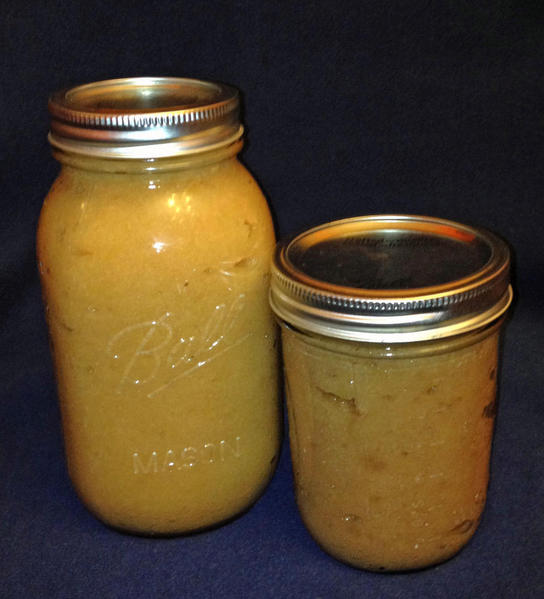Homemade Applesauce

 Avg. rating 5 from 2 votes.
Avg. rating 5 from 2 votes.Recipe Information
Ingredients
Directions
Peel and core apples. Place in a large stainless steel saucepan/stockpot, adding water or juice to prevent sticking. Bring to a boil over medium-high heat. Reduce heat and simmer gently, stirring frequently until apples are softened (5 to 20 minutes, depending on variety and size.) Remove from heat and let cool slightly, about 5 minutes.
Puree apples, using either a food mill or food processor for smoother applesauce, or a potato masher for chunky applesauce. Return to saucepan.
Add sugar, if using, and lemon juice. Bring to a boil over medium-high heat, stirring frequently to prevent sticking. Remove from heat and allow to cool if you are going to freeze or eat within 3-5 days. Maintain a gentle boil over low heat if you are going to preserve in jars.
To preserve in glass jars:
Prepare boiling water canner. Heat jars, lids, and canning funnel (if used) in simmering water until ready for use. Do not boil. Set bands aside.
Ladle hot applesauce into hot jars leaving 1/2 inch headspace. Remove air bubbles. Wipe rim. Center lid on jar. Apply band until fit is fingertip tight.
Process jars in a boiling water canner for 20 minutes (pints and/or quarts) adjusting for altitude. Remove jars and cool. Check lids for seal after 24 hours. Lid should not flex up and down when center is pressed. If a seal is not achieved, either refrigerate and use immediately, or reprocess. (Bring applesauce to a rolling boil for 5 minutes, ladle into clean jars with new lids and process in bath as above.)